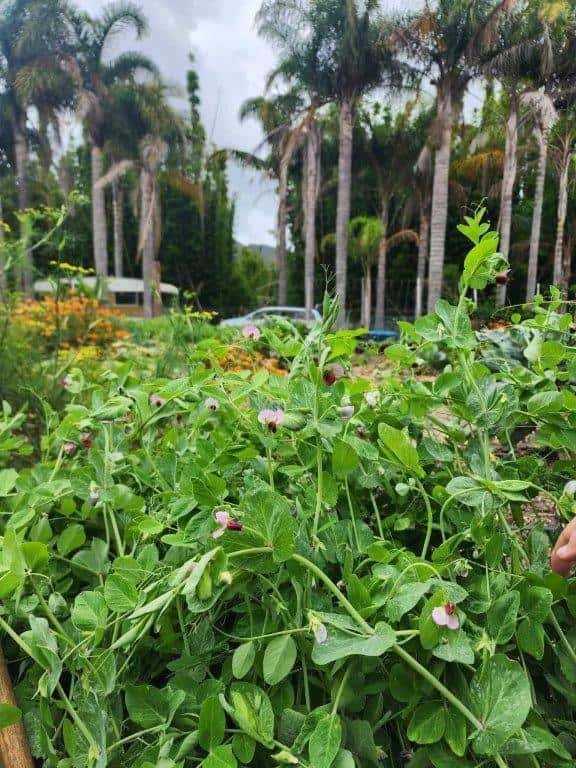Falling leaves, last throes of summer colour, cooling temperatures, fast shortening days and rain. The world of nature responds as always to the cycle of the solar system, whether we are ready or not. But the gardener anticipates and prepares!
Last Chance to Plant!
Now is the very last chance to plant winter veggies – other than garlic and onions. Leave it much longer and most seedlings will make very slow growth through the winter, then when the soil warms up in August and September, they tend to go straight to flower (bolting).
Wet leaves encourage foliar diseases such as downy mildew on brassicas and cercospora leaf spot on silverbeet and beetroot. Allow enough space between plants for air movement over the wet months ahead. If needing to water, water soil not leaves and do it in the morning not at night as wet soil is cold and increases humidity.
Mulch
The cooler the soil gets, the slower plants grow, and the myriad of microbes within the soil get a little sleepy to, many going dormant as the plants slow down their stream of liquid sugars into the soil. Applying a thick layer of mulch now while the soil is damp but still warmish will insulate the soil for a few weeks longer and extend your growing window.
Heavy winter rain on bare soil will compact it, and on slopes there is the risk of precious soil washing away. Once again, a thick layer of mulch will protect the soil, feed beneficial soil fungi and contribute organic matter.
Mulch can be placed between and around veg and herb plants.
Green Manure
However, in beds which will be completely empty over the winter, sowing a crop into them specifically to feed and protect the soil is the very best option, as it will feed a much wider variety of soil organisms and contribute greatly to creating a friable delicious soil for spring planting. The leafy cover also protects the soil from compaction by heavy rain.

These crops are called green manures and are sown straight into the soil. The crop could be a single crop, such as lupins or peas (both of these are legumes and will add nitrogen to the soil), or a mix of legumes, grasses and brassicas, which tend to contribute much more organic matter to the soil through their fibrous root systems. Kings Seeds have a good range of autumn sown green manures.
Pay attention to the recommended sowing density to avoid under or over sowing – undersowing means weeds will have a better opportunity to grow and overcrowd the green manure, oversowing will result in overcrowding and permanently wet leaves, leading to foliar diseases such as downy mildew.
Spreading a light layer of leafy mulch over the green manure seed after sowing helps to keep the soil evenly moist and results in more even germination.
Green manures for autumn sowing will grow and make a thick living leafy mulch over the soil. Come spring when you are ready to plant again, cut the green manure off at soil level with a sharp hoe, leaving the roots in the soil. The piles of leafy matter can be used to make into a compost. The roots left in the soil will break down and contribute plenty of organic matter. The beds can be planted with spring crops within days of clearing.
Traditionally, green manures were rotary hoed or dug into the soil. This however causes huge disruption to the underground community of beneficial microbes that have been nurtured by the thick abundant root systems of the green crop! Plus soil in spring tends to be rather wet, so there is the added risk of causing compaction (which we are trying so hard to prevent) by working wet soil.
Happy end of season gardening!
Words by Caity Endt, Our Food Resilience Coordinator



















